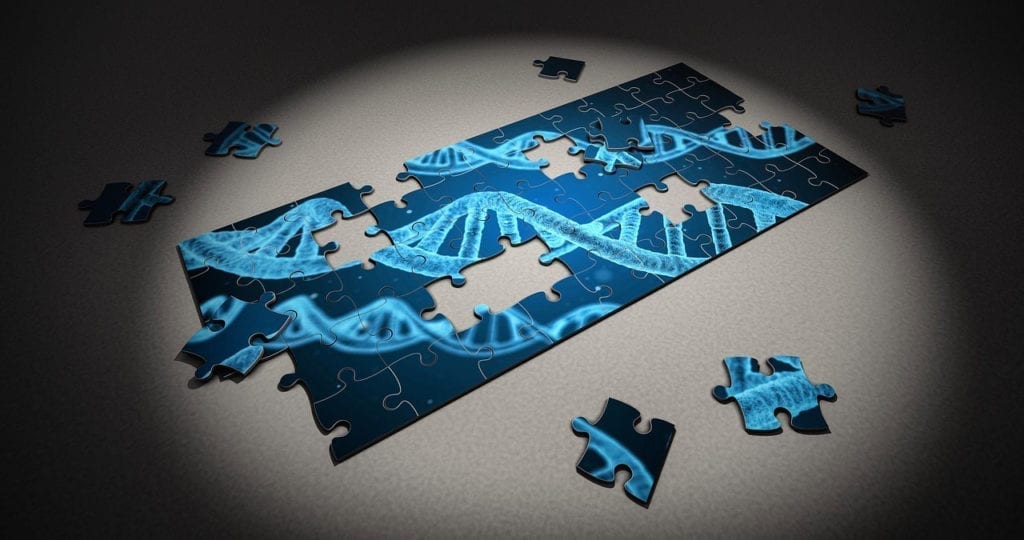According to a press release from the Boston Children’s Hospital, a study has discovered the efficacy of CRISPR-Cas9 gene-editing technology in the treatment of facioscapulohumeral muscular dystrophy (FSHD). As FSHD currently has no real treatments, this study has far-reaching implications for the future of this disorder. Read the full press release here.
Understanding Facioscapulohumeral Muscular Dystrophy
The Muscular Dystrophy Association (MDA) defines facioscapulohumeral muscular dystrophy as a genetic condition which affects muscles in the face (facio), shoulder blades (scapulo), and upper arms (humeral). Much like other forms of muscular dystrophy, FSHD leads to muscle weakness and eventual atrophy. While it most heavily affects the muscles of its namesake, FSHD may also lead to muscle weakness and degeneration throughout the body.
Symptoms of FSHD can often be seen in adolescence, with a majority of people experiencing symptoms before the age of 20. It is caused by a genetic mutation which mistakenly activates the gene DUX4. In the case of FSHD, DUX4 remains active when it shouldn’t, leading to the production of a DUX4 protein that is toxic to muscle cells. Ultimately, this causes cell degeneration.
Learn more about facioscapulohumeral muscular dystrophy here.
The Study
Researchers from the Boston Children’s Hospital wanted to understand the possibility of leveraging other genes to stop production of DUX4 protein. Using CRISPR-Cas9, researchers mutated each gene within the human genome. In doing so, they could uncover genes that would allow for the survival of muscle cells even during DUX4 production. You can find the full study in Science Translational Medicine.
What is CRISPR-Cas9?
CRISPR-Cas9 is a gene-editing technology that scientists can use to alter DNA by removing, altering, adding, or otherwise messing around with genes. According to the NIH, CRISPR-Cas9 is more efficient and accurate than other gene editing approaches.
CRISPR-Cas9 is modeled after a naturally occurring bacterial genome editing system. However, in the lab, CRISPR-Cas9 works by having RNA attach to targeted DNA and the Cas9 enzyme. The Cas9 enzyme cuts the DNA, allowing for researchers to then add, delete, or change genetic material. Learn more about this technology on the NIH website.
This genomic technology could potentially treat genetic diseases by finding the genes to target.
Findings on CRISPR and Facioscapulohumeral Muscular Dystrophy
Researchers state that they used CRISPR-Cas9 to find FSHD genetic pathways that may respond to treatment. This uncovered about six genes that might be helpful.
Further, the genes found related to another condition: hypoxia, where the body is deprived of oxygen. This is important because hypoxia, in relation to DUX4, causes cell death.
Researcher Louis Kunkel states:
“Knockout of key genes involved in hypoxia signaling can desensitize cells to toxicity from DUX4, and prevent them from dying.”
In other words, using CRISPR to silence these genes could potentially help patients with FSHD. Researchers first tested this by exposing muscle cells to compounds that could stop hypoxia from occurring; the muscle cells stayed alive. Next, researchers performed a similar experiment using muscle cells from patients with facioscapulohumeral muscular dystrophy. Once again, these cells had fewer disease biomarkers after being treated with the compounds.
Finally, scientists used two zebrafish modeling FSHD. When introducing these zebrafish to the same compounds, the fish were more active swimmers, and displayed an increase in muscle function. Researchers filed a patent following the study.
What’s Next?
Though there is no treatment for FSHD right now, this study is promising. Using CRISPR can help find narrow treatments based on genetic targets. This has implications not only for patients with FSHD, but for patients with other genetic disorders that have few treatment options, or for which the causes are unknown.







